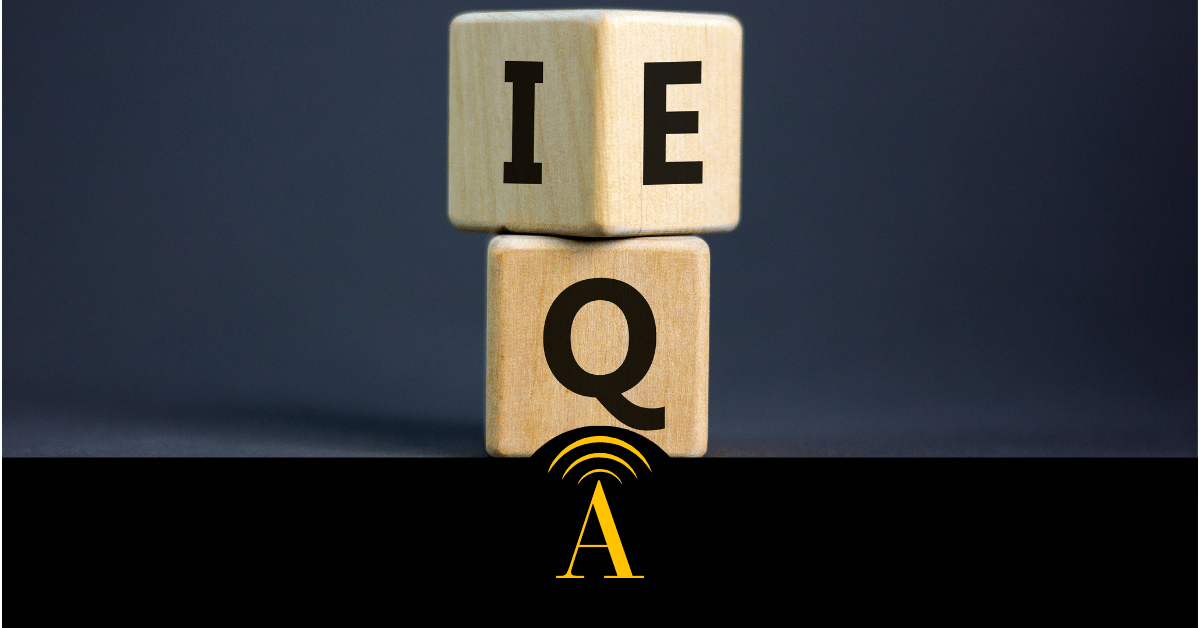Years ago, I was recruiting for one of my earliest companies.
I interviewed every candidate myself
I wanted people who aligned with the vision.
One person still stands out: very young, full of energy, minimal experience.
Something felt right.
But on paper? The boxes didn’t line up.
I chose the “rational” option and declined.
Years later, I learned they’d started their own company.
They were doing well, and now they were a competitor.
Had I trusted my instincts instead of over-prioritizing logic, they might’ve become a key player on our team. Maybe even a partner.
The Hidden Role of Emotion in Leadership Decisions
For decades, leadership dogma put logic and data on a pedestal. Leaders were told to “remove emotions,” stay objective, and be clinical with choices.
Here’s the truth:
- There is no such thing as a purely logical decision.
- Emotions and feelings are always in the room.
Not because leaders are irrational—because leaders are human.
Neuroscience backs this. When brain regions that process emotion are impaired, people struggle to make even simple choices. Emotions act like filters and “somatic markers,” helping us rapidly weigh complex, intangible variables logic alone can’t capture.
Emotions Aren’t the Enemy—They’re Data
Even the most calculated strategic move carries an emotional undertone:
- Hiring → Beyond résumés, you sense who will energize (or drain) the team.
- Strategy & investment → Data guides, but confidence, risk tolerance, and conviction drive the final call.
- Tough conversations → Facts matter, but how people feel shapes whether feedback lands and behaviour changes.
Behavioural science shows we constantly (and often wisely) use affect as information when judging risks and benefits. The “affect heuristic” explains why our felt sense helps us make fast, context-savvy decisions—especially under uncertainty. (You can find more scientific research sources below, including Stanford and MIT.)
Does Emotional Intelligence (EI) Actually Improve Results?
Yes—across roles and industries.
- Job performance: Meta-analyses show EI predicts performance and adds unique value beyond IQ and the Big Five personality traits. In other words, EI is not just “nice to have”—it explains real variance in results that raw intelligence and traits don’t.
- “Smart + wise” outperforms “smart alone”: When EI is higher, it can compensate for lower cognitive horsepower, producing strong overall performance. (Think of EI as the amplifier for IQ in people’s work.)
- Engagement & retention: Employees with higher EI report higher job satisfaction and commitment, and lower turnover intentions—levers leaders care about when building resilient teams.
- Leadership behaviours: Evidence links EI to transformational leadership, though effect sizes depend on who rates whom (largest when the same source rates both EI and leadership, smaller but still present when different sources rate each).
Team-Level Proof: Emotion Shapes Performance Norms
Google’s multi-year “Project Aristotle” found the #1 factor of high-performing teams wasn’t sheer IQ—it was psychological safety: a climate where people feel safe to speak up, admit mistakes, and take risks. That’s an emotional condition leaders create (or erode). The construct originates in Amy Edmondson’s work, repeatedly linked to learning behaviour and performance.
And emotions spread. Decades of research on emotional contagion show that a leader’s mood can ripple through a group, shifting cooperation, conflict, and perceived performance. Positive leader affect → more coordination and prosocial behaviour; negative affect → the opposite. Your emotional presence is a performance variable.
How to Lead With Emotional Wisdom (Without Getting “Soft”)
Here’s a practical, evidence-aligned playbook you can implement today:
1) Run an Emotion Check before big calls
- Name what you feel (fear, excitement, pressure, protectiveness).
- Ask: What is this emotion trying to signal? (risk, opportunity, values, trust)
- Why it works: Labelling increases “emotional granularity,” improving regulation and decision quality.
2) Pair Gut + Data
- Treat intuition as a hypothesis generator; treat data as falsification fuel.
- Write a two-column note: What my gut says vs. What the evidence says. Decide only after you’ve honoured both.
3) Forecast the Human Impact
- For any decision, list likely emotional outcomes for key stakeholders (trust ↑/↓, safety ↑/↓, motivation ↑/↓).
- If negative impacts are likely, design the rollout to protect psychological safety (advance context, agency, and clear “why”).
4) Build Psychological Safety Rituals into meetings
- Start with a 30-second “temperature check” (“What’s one word for how you’re showing up?”).
- Rotate “voice first” to quieter members; thank dissent explicitly.
- Close with one thing we learned and one risk we’ll take next. (Small, consistent practices change norms.)
5) Manage Emotional Contagion
- Do a quick self-reset before high-leverage moments (breath, posture, micro-reframe).
- Name the climate you want to transmit (calm focus? constructive urgency?)—then model it. Your affect is contagious.
6) Coach EI in your leaders
- Teach micro-skills: labelling (name it), reappraisal (reframe it), perspective-taking (humanize it), and recovery (reset it).
- Make them part of performance language, not wellness side quests.
Bringing It Back to the Hiring Story
In that early hiring decision, my “data” said no, but my emotion was signalling potential—grit, hunger, cultural fit. Today, I don’t ignore those signals. I interrogate them. I treat emotion as information, then look for corroborating evidence (work samples, reference patterns, trial projects).
The strongest leaders blend intellect and emotion seamlessly. They make aligned decisions—where facts, strategy, and human impact work together.
Because leadership isn’t only about choosing the “right” option. It’s about choosing the right option for the people who must carry it forward.
Question for you: When have you ignored your intuition and later regretted it? What would your Emotion Check have revealed in that moment?
Sources (selected)
- Damasio/Bechara on emotion & decision-making (Iowa Gambling Task; somatic marker hypothesis). PMC+1
- Affect heuristic in risk/benefit judgments. Stanford University
- EI ↔ job performance (incremental validity beyond IQ & Big Five). eitc.ioWiley Online Library
- EI + cognitive intelligence compensation effects. SAGE Journals
- Team psychological safety → learning & performance; Project Aristotle. Massachusetts Institute of TechnologyRework
- Emotional contagion in groups & leader mood effects. Of (im)possible interest

